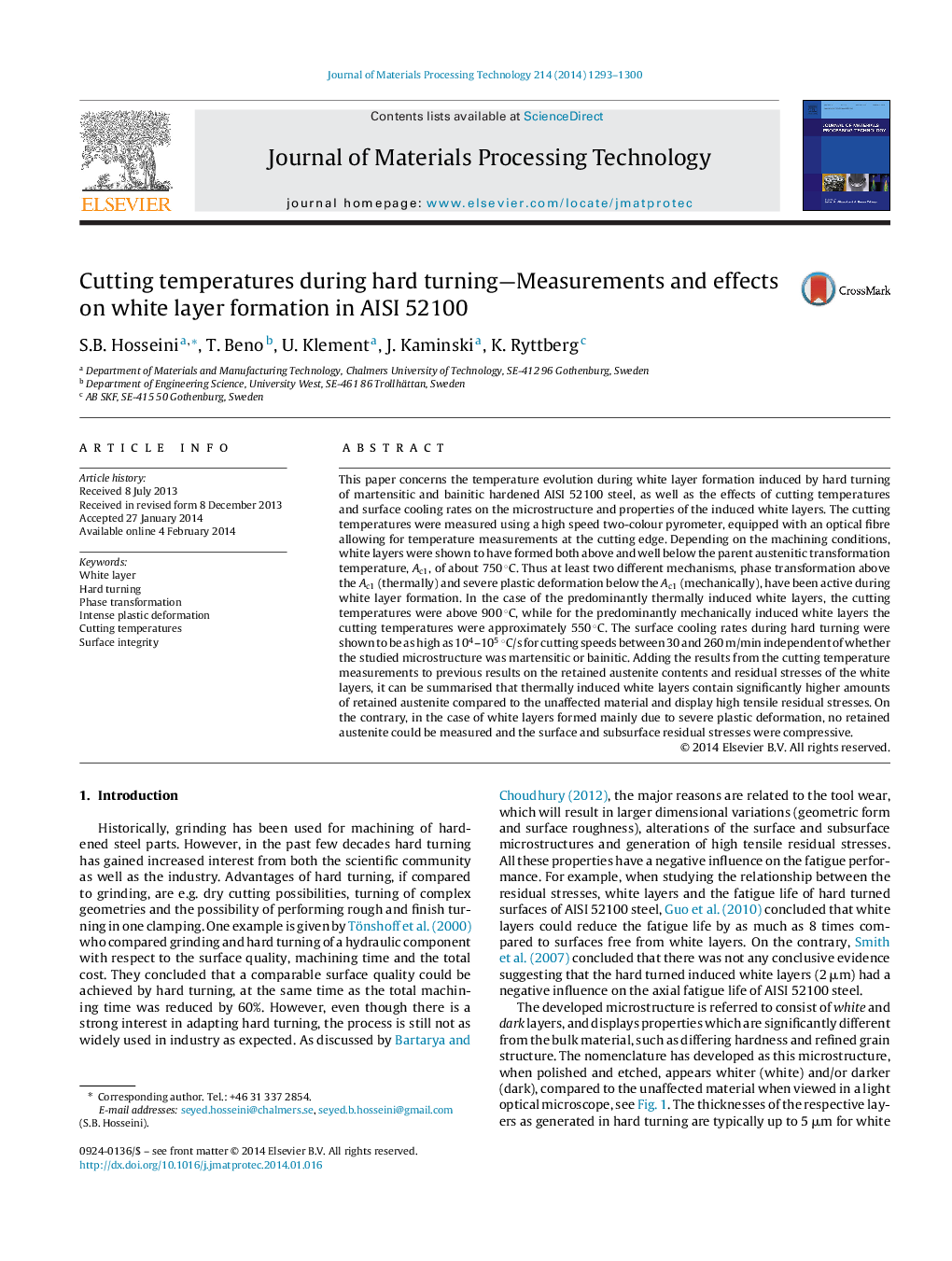| کد مقاله | کد نشریه | سال انتشار | مقاله انگلیسی | نسخه تمام متن |
|---|---|---|---|---|
| 790976 | 901903 | 2014 | 8 صفحه PDF | دانلود رایگان |

This paper concerns the temperature evolution during white layer formation induced by hard turning of martensitic and bainitic hardened AISI 52100 steel, as well as the effects of cutting temperatures and surface cooling rates on the microstructure and properties of the induced white layers. The cutting temperatures were measured using a high speed two-colour pyrometer, equipped with an optical fibre allowing for temperature measurements at the cutting edge. Depending on the machining conditions, white layers were shown to have formed both above and well below the parent austenitic transformation temperature, Ac1, of about 750 °C. Thus at least two different mechanisms, phase transformation above the Ac1 (thermally) and severe plastic deformation below the Ac1 (mechanically), have been active during white layer formation. In the case of the predominantly thermally induced white layers, the cutting temperatures were above 900 °C, while for the predominantly mechanically induced white layers the cutting temperatures were approximately 550 °C. The surface cooling rates during hard turning were shown to be as high as 104–105 °C/s for cutting speeds between 30 and 260 m/min independent of whether the studied microstructure was martensitic or bainitic. Adding the results from the cutting temperature measurements to previous results on the retained austenite contents and residual stresses of the white layers, it can be summarised that thermally induced white layers contain significantly higher amounts of retained austenite compared to the unaffected material and display high tensile residual stresses. On the contrary, in the case of white layers formed mainly due to severe plastic deformation, no retained austenite could be measured and the surface and subsurface residual stresses were compressive.
Journal: Journal of Materials Processing Technology - Volume 214, Issue 6, June 2014, Pages 1293–1300